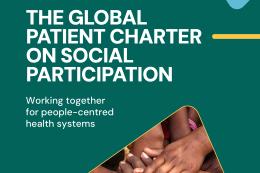Policy Briefing #6 – Medicines regulatory harmonisation

Examples of regulatory harmonisation can be found in various world regions (Europe, Americas, Africa). By pursuing a stronger alignment in terms of standards and regulatory rules, different countries seek to create a more harmonised regulatory environment within which patients can benefit from better and faster access to innovative medicines. However, in order for this process to fully and successfully tackle patients’ real needs, it must build on strong and meaningful patient engagement.
Some world areas, for example Europe, have already put in place established mechanisms of patient engagement in the activities carried out by their regulatory agencies. Other areas, for example Africa, are in the process of launching their own agencies, which represents an important opportunity for patients to be part of this conversation from the start.
In this policy briefing, IAPO highlights three key messages that patient advocates can draw on to emphasise the value of structured patient engagement in harmonisation mechanisms and processes:
- Patient engagement in regulatory harmonisation must take place as early as possible and be nurtured over time;
- “Leave no-one behind” means more than access to medicines;
- Harmonising does not mean ignoring differences.
IAPO is committed to keeping the momentum going by ensuring that patients’ views and perspectives become a necessary ingredient for a proper development of both on-going and newly launched harmonisaiton processes.
If you have any questions or comments about the policy briefing, get in touch with Antonio Ciaglia, Policy Manager, antonio@iapo.org.uk
Read the policy briefing on medicines regulatory harmonisation here.
Related information- Policy Briefing #1: Patient-Centered Healthcare
- Policy Briefing #2: Patient Information and Health Literacy
- Policy Briefing #3: High quality access to care
- Policy Briefing #4: Patient Involvement in HTA
- IAPO's 2017 Member Engagement and Empowerment Plan



